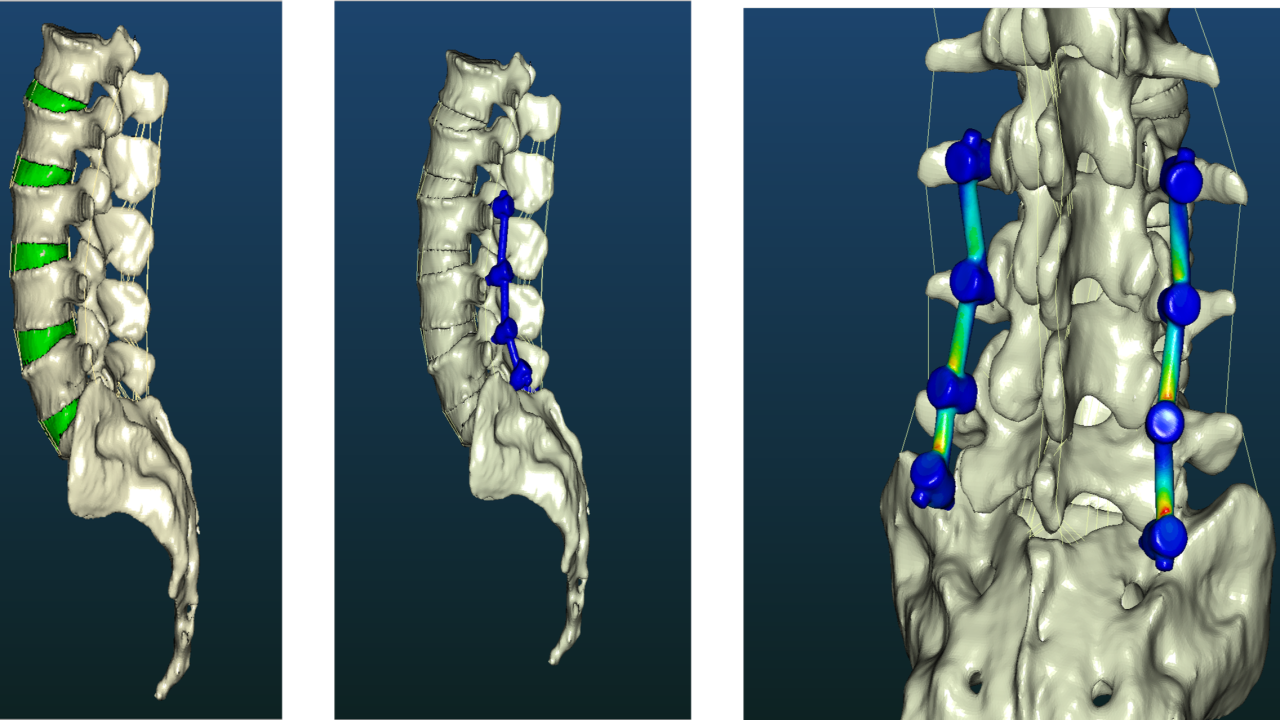
From Aerospace to Healthcare: How Digital Twin Technology is Transforming Spine Care
Digital twin technology has revolutionized industries like automotive and aerospace, enabling engineers to simulate, test, and optimize complex systems before real-world implementation.
This innovation, pioneered by companies like MSC Software, allowed for virtual prototyping of aircraft and automobiles, drastically improving safety, efficiency, and performance. MSC Software, originally MacNeal-Schwendler Corporation, played a crucial role in pioneering finite element analysis (FEA) in aerospace through the development of NASTRAN (NASA Structural Analysis) in collaboration with NASA. This software became the industry standard for structural analysis in aerospace engineering, laying the foundation for computational modeling advancements in other industries.
I had the chance to sell my first start-up, e-Xstream engineering, to MSC Software then to lead MSC Software before leaving to create MDsim.
Today, we are witnessing a powerful shift—these same principles of AI-driven modeling and simulation are making their way into healthcare, addressing some of the most pressing challenges in spine care.
The Evolution of Digital Twins Across Industries
In aerospace and automotive, digital twins have enabled manufacturers to create virtual representations of physical assets. These high-fidelity simulations allow for predictive maintenance, risk assessment, and optimization—reducing failures and enhancing performance before a product even takes physical form. The success of digital twin technology in these fields has set the stage for its adoption in healthcare, where precision and predictive modeling are equally critical.
Bringing Digital Twins to Healthcare and Spine Care
The same AI and computer modeling methodologies that transformed mechanical engineering are now being applied to human biomechanics. In spine care, a digital twin can serve as a patient-specific biomechanical model, enabling spine care professionals to:
- Prevent Spine Degeneration: By analyzing an individual’s movement patterns, load distribution, and posture, a digital twin can help predict risks of degeneration before symptoms appear, enabling preventive interventions.
- Simulate Treatment Options: Just as engineers test aerodynamics in a wind tunnel simulation, spine surgeons can now simulate different treatment approaches—such as physical therapy, bracing, or surgical interventions—to assess potential outcomes before making a decision.
- Enhance Spine Surgery Planning: In cases where surgery is necessary, a digital twin can provide a personalized simulation of spinal fusion, ensuring optimal implant positioning and minimizing risks, ultimately improving patient outcomes.
Regulatory Challenges in Healthcare vs. Industry Approaches
Unlike many other industries, where digital twin technology can be rapidly implemented and used, healthcare applications must navigate stringent regulatory pathways before reaching clinical use. Medical devices and software, including those based on digital twin technology, must be developed under strict Quality Systems such as ISO 13485, undergo extensive verification and clinical validation, and obtain regulatory approvals such as FDA clearanceand CE marking before they can be marketed. These requirements ensure patient safety and efficacy but also introduce significant time and cost considerations compared to industrial applications. The challenge lies in balancing technological innovation with compliance to ensure that AI-driven solutions for spine care meet the highest standards of medical reliability and safety.
The Role of AI and Simulation in Personalized Spine Care
The power of AI in digital twin technology lies in its ability to process vast amounts of data and generate highly accurate, individualized models. By leveraging AI-driven simulation, spine care professionals can move beyond a one-size-fits-all approach and embrace personalized medicine. This shift represents a major leap forward in how we diagnose, treat, and prevent spinal disorders.
Cross-Industry Innovation: The Future of Spine Health
As we continue to integrate advanced computational tools from aerospace and automotive engineering into spine care, the potential for improving patient outcomes grows exponentially. By learning from industries that have successfully implemented digital twin technology, we can accelerate innovation in healthcare, providing spine specialists with unprecedented insights and tools.
At MDsim, we are at the forefront of this cross-industry transformation. Our mission is to harness the power of digital twins to empower spine care professionals with AI-driven insights, helping prevent back problems and optimize surgical planning.
The future of spine care is here—modeled, simulated, and optimized for better patient outcomes.
Thank you for the extended team believing in our mission for superior spine care and for our investors and extended stakeholders for trusting us.
if you are spine care professional, if you are interested in back-pain and spine care, if you a medical tech enthusiast, do not hesitate to comment or like. We would love to hear from you.
In any case, STAY TUNED… you will also have the opportunity to contribute!
Author: Roger Assaker
#Spine #DigitalTwin #AI #SpineCare #MedTech #Innovation #Simulation #FEA #MSCSoftware #Hexagon #MDsim #SPINEsim
You May Also Like
MDsim: transforming spine surgery through simulation technology
MDsim was founded by three visionary brothers—Richard, Dany, and Roger Assaker—each bringing a d
Quality at MDsim: More Than Just a Standard
At MDsim, quality is more than just a checkbox: it is the heartbeat of everything we do. Why is it s





Leave a Reply